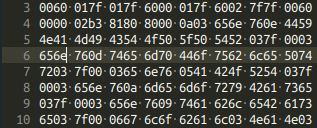WebAssembly 初体验:从零开始重构计算模块从属于笔者的 Web 前端入门与工程实践,更多相关资料文章参考WebAssembly 学习与实践资料索引和 React 学习与实践资料索引。本文中使用的游戏代码修改自 WebAssembly 101: a developer's first steps。
WebAssembly 的概念、意义以及未来带来的性能提升相信已是耳熟能详,笔者在前端每周清单系列中也是经常会推荐 WebAssembly 相关文章。不过笔者也只是了解其概念而未真正付诸实践,本文即是笔者在将我司某个简单项目中的计算模块重构为 WebAssembly 过程中的总结。在简单的实践中笔者个人感觉,WebAssembly 的抽象程度会比 JavaScript 高不少,未来对于大型项目的迁移,对于纯前端工程师而言可能存在的坑也是不少,仿佛又回到了被指针统治的年代。本文笔者使用的案例已经集成到了 React 脚手架 create-react-boilerplate 中 ,可以方便大家快速本地实践。
编译环境搭建
我们使用 Emscripten 将 C 代码编译为 wasm 格式,官方推荐的方式是首先下载 Portable Emscripten SDK for Linux and OS X (emsdk-portable.tar.gz) 然后利用 emsdk 进行安装:
$ ./emsdk update
$ ./emsdk install latest
# 如果出现异常使用 ./emsdk install sdk-1.37.12-64bit
# https://github.com/kripken/emscripten/issues/5272安装完毕后激活响应环境即可以进行编译:
$ ./emsdk activate latest
$ source ./emsdk_env.sh # you can add this line to your .bashrc笔者在本地执行上述搭建步骤时一直失败,因此改用了 Docker 预先配置好的镜像进行处理:
# 拉取 Docker 镜像
docker pull 42ua/emsdk
# 执行编译操作
docker run --rm -v $(pwd):/home/src 42ua/emsdk emcc hello_world.c对应的 Dockfile 如下所示,我们可以自行修改以适应未来的编译环境:
FROM ubuntu
RUN
apt-get update && apt-get install -y build-essential
cmake python2.7 python nodejs-legacy default-jre git-core curl &&
apt-get clean &&
cd ~/ &&
curl -sL https://s3.amazonaws.com/mozilla-games/emscripten/releases/emsdk-portable.tar.gz | tar xz &&
cd emsdk-portable/ &&
./emsdk update &&
./emsdk install -j1 latest &&
./emsdk activate latest &&
rm -rf ~/emsdk-portable/clang/tag-*/src &&
find . -name "*.o" -exec rm {} ; &&
find . -name "*.a" -exec rm {} ; &&
find . -name "*.tmp" -exec rm {} ; &&
find . -type d -name ".git" -prune -exec rm -rf {} ; &&
apt-get -y --purge remove curl git-core cmake &&
apt-get -y autoremove && apt-get clean
# http://docs.docker.com/engine/reference/run/#workdir
WORKDIR /home/src到这里基本环境已经配置完毕,我们可以对简单的 counter.c 进行编译,源文件如下:
int counter = 100;
int count() {
counter += 1;
return counter;
}编译命令如下所示,如果本地安装好了 emcc 则可以直接使用,否则使用 Docker 环境进行编译:
$ docker run --rm -v $(pwd):/home/src 42ua/emsdk emcc counter.c -s WASM=1 -s SIDE_MODULE=1 -o counter.wasm
$ emcc counter.c -s WASM=1 -s SIDE_MODULE=1 -o counter.wasm
# 如果出现以下错误,则是由如下参数
# WebAssembly Link Error: import object field 'DYNAMICTOP_PTR' is not a Number
emcc counter.c -O1 -s WASM=1 -s SIDE_MODULE=1 -o counter.wasm 这样我们就得到了 WebAssembly 代码:
与 JavaScript 集成使用
独立的 .wasm 文件并不能直接使用,我们需要在客户端中使用 JavaScript 代码将其加载进来。最朴素的加载 WebAssembly 的方式就是使用 fetch 抓取然后编译,整个过程可以封装为如下函数:
// 判断是否支持 WebAssembly
if (!('WebAssembly' in window)) {
alert('当前浏览器不支持 WebAssembly!');
}
// Loads a WebAssembly dynamic library, returns a promise.
// imports is an optional imports object
function loadWebAssembly(filename, imports) {
// Fetch the file and compile it
return fetch(filename)
.then(response => response.arrayBuffer())
.then(buffer => WebAssembly.compile(buffer))
.then(module => {
// Create the imports for the module, including the
// standard dynamic library imports
imports = imports || {};
imports.env = imports.env || {};
imports.env.memoryBase = imports.env.memoryBase || 0;
imports.env.tableBase = imports.env.tableBase || 0;
if (!imports.env.memory) {
imports.env.memory = new WebAssembly.Memory({ initial: 256 });
}
if (!imports.env.table) {
imports.env.table = new WebAssembly.Table({ initial: 0, element: 'anyfunc' });
}
// Create the instance.
return new WebAssembly.Instance(module, imports);
});
}我们可以使用上述工具函数加载 wasm 文件:
loadWebAssembly('counter.wasm')
.then(instance => {
var exports = instance.exports; // the exports of that instance
var count = exports. _count; // the "_count" function (note "_" prefix)
// 下面即可以调用 count 函数
}
);而在笔者的脚手架中,使用了 wasm-loader 进行加载,这样可以将 wasm 直接打包在 Bundle 中,然后通过 import 导入:
import React, { PureComponent } from "react";
import CounterWASM from "./counter.wasm";
import Button from "antd/es/button/button";
import "./Counter.scss";
/**
* Description 简单计数器示例
*/
export default class Counter extends PureComponent {
state = {
count: 0
};
componentDidMount() {
this.counter = new CounterWASM({
env: {
memoryBase: 0,
tableBase: 0,
memory: new window.WebAssembly.Memory({ initial: 256 }),
table: new window.WebAssembly.Table({ initial: 0, element: "anyfunc" })
}
});
this.setState({
count: this.counter.exports._count()
});
}
/**
* Description 默认渲染函数
*/
render() {
const isWASMSupport = "WebAssembly" in window;
if (!isWASMSupport) {
return (
<div>
浏览器不支持 WASM
</div>
);
}
return (
<div className="Counter__container">
<span>
简单计数器示例:
</span>
<span>{this.state.count}</span>
<Button
type="primary"
onClick={() => {
this.setState({
count: this.counter.exports._count()
});
}}
>
点击自增
</Button>
</div>
);
}
}在使用 wasm-loader 时,其会调用 new WebAssembly.Instance(module, importObject);
module即 WebAssembly.Module 实例。importObject即默认的由wasm-loader提供的对象。
简单游戏引擎重构
上文我们讨论了利用 WebAssembly 重构简单的计数器模块,这里我们以简单的游戏为例,交互式的感受 WebAssembly 带来的性能提升,可以直接查看游戏的在线演示。这里的游戏引擎即是执行部分计算与重新赋值操作,譬如这里的计算下一个位置状态的函数在 C 中实现为:
EMSCRIPTEN_KEEPALIVE
void computeNextState()
{
loopCurrentState();
int neighbors = 0;
int i_m1, i_p1, i_;
int j_m1, j_p1;
int height_limit = height - 1;
int width_limit = width - 1;
for (int i = 1; i < height_limit; i++)
{
i_m1 = (i - 1) * width;
i_p1 = (i + 1) * width;
i_ = i * width;
for (int j = 1; j < width_limit; j++)
{
j_m1 = j - 1;
j_p1 = j + 1;
neighbors = current[i_m1 + j_m1];
neighbors += current[i_m1 + j];
neighbors += current[i_m1 + j_p1];
neighbors += current[i_ + j_m1];
neighbors += current[i_ + j_p1];
neighbors += current[i_p1 + j_m1];
neighbors += current[i_p1 + j];
neighbors += current[i_p1 + j_p1];
if (neighbors == 3)
{
next[i_ + j] = 1;
}
else if (neighbors == 2)
{
next[i_ + j] = current[i_ + j];
}
else
{
next[i_ + j] = 0;
}
}
}
memcpy(current, next, width * height);
}而对应的 JS 版本引擎的实现为:
computeNextState() {
let neighbors, iM1, iP1, i_, jM1, jP1;
this.loopCurrentState();
for (let i = 1; i < this._height - 1; i++) {
iM1 = (i - 1) * this._width;
iP1 = (i + 1) * this._width;
i_ = i * this._width;
for (let j = 1; j < this._width - 1; j++) {
jM1 = j - 1;
jP1 = j + 1;
neighbors = this._current[iM1 + jM1];
neighbors += this._current[iM1 + j];
neighbors += this._current[iM1 + jP1];
neighbors += this._current[i_ + jM1];
neighbors += this._current[i_ + jP1];
neighbors += this._current[iP1 + jM1];
neighbors += this._current[iP1 + j];
neighbors += this._current[iP1 + jP1];
if (neighbors === 3) {
this._next[i_ + j] = 1;
} else if (neighbors === 2) {
this._next[i_ + j] = this._current[i_ + j];
} else {
this._next[i_ + j] = 0;
}
}
}
this._current.set(this._next);
}本部分的编译依旧是直接将 [engine.c]() 编译为 engine.wasm,不过在导入的时候我们需要动态地向 wasm 中注入外部函数:
this.module = new EngineWASM({
env: {
memoryBase: 0,
tableBase: 0,
memory: new window.WebAssembly.Memory({ initial: 1024 }),
table: new window.WebAssembly.Table({ initial: 0, element: "anyfunc" }),
_malloc: size => {
let buffer = new ArrayBuffer(size);
return new Uint8Array(buffer);
},
_memcpy: (source, target, size) => {
let sourceEnd = source.byteLength;
let i, j;
for (
(i = 0), (j = 0), (k = new Uint8Array(target)), (l = new Uint8Array(
source
));
i < sourceEnd;
++i, ++j
)
k[j] = l[i];
}
}
});到这里文本告一段落,笔者最后需要声明的是因为这只是随手做的实验,最后的代码包括对于内存的操作可能存在潜在问题,请读者批评指正。
最后
以上就是优雅树叶最近收集整理的关于 WebAssembly 初体验:从零开始重构计算模块编译环境搭建与 JavaScript 集成使用简单游戏引擎重构的全部内容,更多相关内容请搜索靠谱客的其他文章。








发表评论 取消回复